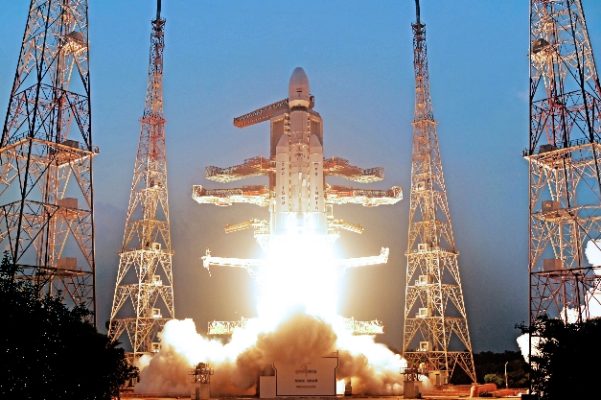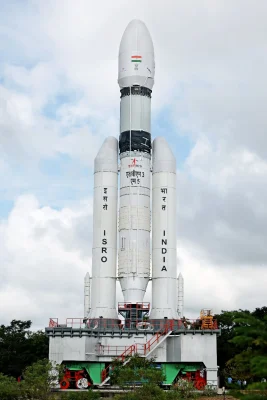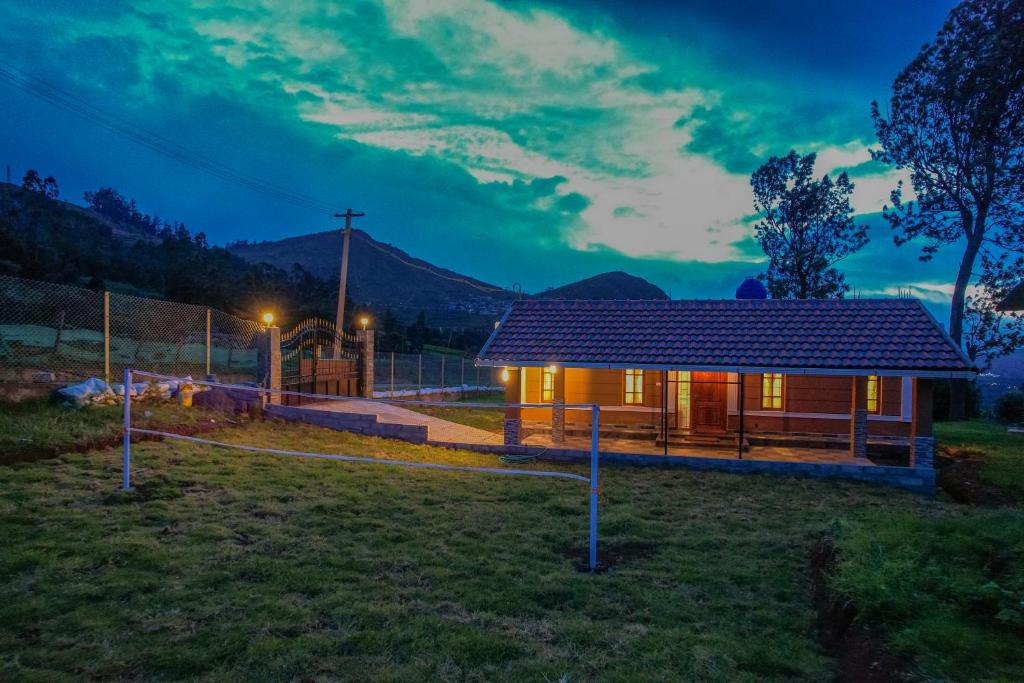 Pin
Pin Photo courtesy of ISRO
It is a truth universally acknowledged that a nation in possession of vast territories and oceanic borders must be in want of excellent communication. On the second day of November in the year 2025, at precisely twenty-six minutes past five in the evening, the Indian Space Research Organisation demonstrated this principle most admirably when ISRO successfully launches communication satellite CMS-03 from the distinguished grounds of Sriharikota in Andhra Pradesh.
The satellite, a most impressive apparatus weighing some 4,410 kilograms, ascended upon the capable shoulders of the LVM3-M5 rocket—affectionately termed ‘Bahubali’ by those gentlemen of science for its prodigious strength. This marked not merely another celestial venture, but rather the heaviest communication satellite ever to depart Indian soil bound for Geosynchronous Transfer Orbit. One might observe that such an achievement speaks volumes about the advancement of indigenous capabilities, rendering obsolete the former necessity of seeking foreign assistance for launching weightier payloads.
Table of Contents
The Distinguished Vessel and Its Noble Purpose
 Pin
Pin Photo courtesy of ISRO
The CMS-03 satellite, dear reader, belongs to a most respectable lineage known as the Communication Satellite Series, which serves the telecommunications and broadcasting establishments across our vast subcontinent. This particular gentleman of satellites carries within its metallic frame an extended C-band transponder system comprising thirty-two channels, each designed with the express purpose of delivering television broadcasts, telecommunications services, and digital connectivity to even the most distant villages and island territories of India. One might liken it to a celestial post office, receiving signals from Earth and graciously redirecting them to their intended recipients across the land.
What renders this launch particularly noteworthy, however, is the satellite’s considerable mass of 4,410 kilograms. In previous years, satellites of such substantial weight required the hospitality of foreign launch vehicles, much as a traveller of considerable luggage might require a larger carriage. The successful deployment of CMS-03 using India’s own LVM3 rocket demonstrates a newfound self-sufficiency that would make any nation proud. The satellite now resides in a geostationary orbit some 36,000 kilometres above the equator, maintaining a fixed position relative to Earth’s surface, rather like a devoted sentinel keeping watch over the territories below, ensuring that communication channels remain open and reliable for all who depend upon them.
The Remarkable Conveyance—LVM3 Rocket
 Pin
Pin Photo courtesy of ISRO
The Launch Vehicle Mark 3, which the engineers have christened ‘Bahubali’ after the legendary warrior of Indian cinema, stands as a testament to decades of patient development and ingenious engineering. This three-stage rocket rises to a height of forty-three metres, rather resembling a slender tower of considerable elegance and power. The vehicle employs a most clever arrangement of propulsion systems, with two solid rocket boosters providing the initial thrust, a liquid core stage managing the middle portion of ascent, and a cryogenic upper stage delivering the final, delicate push into the desired orbit.
The nomenclature ‘Bahubali’ proves most apt, for this rocket possesses the strength to carry payloads weighing up to ten tonnes to lower Earth orbits, a capability that places India among a select society of nations possessing such heavy-lift capacity.
The launch itself proceeded with the kind of precision one might expect from a well-rehearsed performance at the theatre. The rocket departed from the Second Launch Pad at the Satish Dhawan Space Centre at precisely the appointed hour, ascending through the coastal skies of Sriharikota with remarkable composure. Within approximately seventeen minutes of departure, the CMS-03 satellite separated from its carrier and began its independent journey, much as a young person of quality might leave the family estate to establish their own household. The mission control centre at Bengaluru confirmed the successful injection into Geosynchronous Transfer Orbit, whereupon the satellite’s solar panels deployed like the opening of a fan, preparing to harness the sun’s energy for its operational life spanning some fifteen years.
The Celestial Dance of Orbital Mechanics
 Pin
Pin Photo courtesy of ISRO
To properly appreciate the achievement of placing CMS-03 into its designated position, one must first understand the rather elegant choreography of orbital insertion. The satellite was not deposited directly into its final geostationary orbit, but rather into what the astronomers term a Geosynchronous Transfer Orbit, an elliptical path that stretches from a mere 170 kilometres above Earth at its nearest point to some 36,000 kilometres at its farthest reach. This intermediate orbit serves much the same purpose as a staging post on a long journey, allowing the satellite to gather itself before making the final transition to its permanent residence.
Over the subsequent days following launch, the satellite’s onboard propulsion system executed a series of carefully timed burns, gradually raising the orbit’s lowest point until it achieved a circular path at the desired altitude.
The geostationary orbit itself possesses properties that would have delighted the natural philosophers of earlier centuries. At this precise altitude of 36,000 kilometres above the equator, a satellite completes one full revolution around Earth in exactly twenty-four hours, the same duration as our planet’s own rotation. Consequently, the satellite appears to remain stationary above a fixed point on the Earth’s surface, rather like a celestial lamppost that never moves from its appointed station. This characteristic proves invaluable for communication purposes, as ground stations need not constantly adjust their antennas to track a moving target. CMS-03 has been positioned at 83 degrees East longitude, providing coverage across the Indian subcontinent, the Bay of Bengal, and surrounding maritime territories with admirable consistency.
The Transponders and Their Conversational Duties
 Pin
Pin Photo courtesy of ISRO
The heart of any communication satellite, if one may employ such a metaphor, lies within its transponders—those curious devices that serve as intermediaries in the grand conversation between distant parties. The CMS-03 carries thirty-two extended C-band transponders, each functioning rather like a diligent clerk in a busy correspondence office, receiving signals transmitted from Earth stations, amplifying them to compensate for the weakening effects of their long journey through space, and then redirecting them back to their intended recipients on the ground.
The C-band frequency range, operating between four and eight gigahertz, possesses a particular advantage in the Indian context, as these radio waves demonstrate remarkable resilience when passing through monsoon clouds and heavy rainfall, conditions that would severely impair the performance of higher frequency systems.
Each transponder aboard CMS-03 handles a bandwidth of approximately seventy-two megahertz, providing sufficient capacity for multiple television channels, telephone conversations, or data streams to travel simultaneously without interference. One might think of it as a well-organized drawing room where several conversations occur at once, each perfectly audible to its participants without disturbing the others. The extended C-band configuration ensures compatibility with the existing ground infrastructure already established across India, allowing television broadcasters, telecommunication operators, and government agencies to utilize the satellite’s services without requiring expensive modifications to their earthbound equipment. This practical consideration demonstrates admirable foresight on the part of the mission planners, who understood that technological advancement serves little purpose if it remains inaccessible to those who would benefit most from its capabilities.
The Distinguished Lineage of Communication Satellites
 Pin
Pin Photo courtesy of ISRO
The CMS-03 satellite does not stand alone in its celestial duties, but rather represents the continuation of a most distinguished family tradition in Indian space endeavours. The Communication Satellite Series emerged as the successor to earlier programmes, most notably the GSAT series which served India’s broadcasting and telecommunications needs for many years with considerable distinction. The nomenclature changed in recent years to reflect a more streamlined approach to satellite classification, with CMS designating communication satellites, EOS referring to Earth observation systems, and NVS denoting navigation satellites.
This reorganization resembles the manner in which a great estate might catalog its holdings more systematically, ensuring that each asset receives proper attention and resources according to its particular function.
The CMS-03 follows in the footsteps of its elder sibling, CMS-01, which launched in December 2020 aboard a smaller PSLV rocket. That earlier satellite, weighing a modest 1,410 kilograms, demonstrated the viability of the new naming convention and provided extended C-band services to the Indian mainland and Andaman and Nicobar Islands. The substantial increase in mass between CMS-01 and CMS-03 reflects not merely a preference for larger apparatus, but rather a calculated response to growing demand for communication bandwidth across the nation. As television channels multiply, internet usage expands, and government services increasingly migrate to digital platforms, the capacity requirements have grown exponentially. One might observe that just as a growing family requires a larger residence, a developing nation requires progressively more capable satellites to accommodate its expanding communication needs.
The Economic Considerations of Self-Reliance
The financial implications of launching CMS-03 domestically rather than engaging foreign launch services merit particular attention, for they reveal much about India’s strategic positioning in the global space economy. In years past, when Indian satellites exceeded approximately two tonnes in mass, the nation found itself obliged to contract with foreign entities, primarily the European Arianespace consortium, to convey these heavier payloads to orbit. Such arrangements, while perfectly serviceable, required substantial payments in foreign currency and subjected launch schedules to the availability and priorities of external providers. The cost of a single commercial launch on a foreign vehicle might range between sixty to ninety million dollars, a sum that would make even the wealthiest landowner pause to consider the expenditure. By contrast, the LVM3 rocket, being an indigenous creation, allows ISRO to conduct launches at a fraction of this cost, with estimates suggesting expenses in the range of thirty to forty million dollars per mission.
Beyond the immediate financial savings, however, lies a more profound economic advantage that extends across multiple domains of national capability. The development and operation of heavy-lift launch vehicles sustains a vast network of manufacturing facilities, research institutions, and specialized workforce throughout the country. The propulsion systems, avionics, composite materials, and precision instruments required for such rockets generate employment for thousands of engineers, technicians, and skilled workers across numerous states. Furthermore, the technology developed for space applications frequently finds secondary uses in terrestrial industries, much as innovations in carriage design might later benefit agricultural equipment or civilian transport. The ability to launch heavy satellites domestically also positions India as a potential provider of launch services to other nations, transforming what was once a significant import expense into a prospective export revenue stream.
The Societal Benefits of Enhanced Connectivity
The true measure of CMS-03’s value, however, extends far beyond the technical specifications and financial calculations that occupy the minds of engineers and accountants. The satellite’s primary mission concerns itself with bridging the considerable divide that persists between urban centres enjoying abundant connectivity and rural communities where access to information and services remains frustratingly limited. In the more remote villages of India, particularly those nestled in mountainous terrain or scattered across island territories, the installation of terrestrial communication infrastructure presents formidable challenges both physical and economic. Laying fiber-optic cables across difficult geography or erecting cellular towers in sparsely populated areas rarely justifies the investment from a purely commercial perspective. The CMS-03 satellite circumvents these obstacles entirely, beaming signals directly to receiving stations that can be established in even the most isolated locations, much as a lighthouse serves ships regardless of how distant they might be from the harbor.
The applications of this enhanced connectivity touch upon nearly every aspect of modern life in ways that would have seemed quite fantastical to earlier generations. Telemedicine services allow rural patients to consult with specialist physicians located hundreds of kilometres distant, potentially saving lives that might otherwise be lost to treatable conditions. Educational programming reaches schoolchildren in areas where qualified teachers remain scarce, delivering instruction in subjects from mathematics to music with consistency and quality. Government services that once required arduous journeys to district headquarters can now be accessed through digital platforms, saving citizens both time and expense while reducing the opportunities for corruption that sometimes plague physical bureaucracies. Agricultural extension services provide farmers with timely information about weather patterns, crop diseases, and market prices, enabling more informed decisions about planting and harvesting schedules.
The Strategic Importance of Communication Sovereignty
In matters of national security and strategic autonomy, the possession of indigenous satellite communication capabilities assumes an importance that transcends mere commercial considerations. A nation’s communication infrastructure represents, in many respects, the nervous system of its governmental and military operations, conveying information that must remain secure from observation or interference by potentially hostile parties. When a country depends upon foreign satellites or launch services for critical communications, it necessarily places a measure of trust in external entities whose interests may not always align perfectly with its own. The CMS-03 satellite, being entirely under Indian control from conception through operation, ensures that sensitive communications remain within a closed system immune to external manipulation. This arrangement proves particularly valuable during periods of international tension, when access to foreign-controlled systems might be restricted or denied altogether, much as a prudent estate owner maintains independent water sources rather than relying entirely upon a neighbour’s goodwill.
The military applications of secure satellite communications extend across all domains of modern defense operations, from coordinating troop movements across vast distances to enabling real-time intelligence sharing between forward units and command centres. Naval vessels operating in the Indian Ocean require constant communication with shore establishments, both for routine coordination and emergency situations that might demand immediate response. Aircraft conducting surveillance or patrol missions depend upon satellite links to transmit their observations and receive updated instructions as circumstances evolve. The extended C-band frequencies employed by CMS-03 offer particular advantages in this context, as their resistance to weather interference ensures reliable communication even during monsoon seasons when other systems might falter. Additionally, the satellite’s coverage footprint, which encompasses not merely the Indian landmass but also extensive maritime zones including critical sea lanes, provides the armed forces with communication capabilities across their entire operational theatre, rather like ensuring that every sentry post can relay messages to the castle keep regardless of distance or terrain.
The Technical Marvel of Solar Power Management
The CMS-03 satellite must sustain its operations for an anticipated fifteen years whilst residing in the unforgiving environment of space, where neither fuel deliveries nor repair visits prove feasible once the initial deployment concludes. To accomplish this remarkable feat of endurance, the satellite relies upon an elegant power generation system based upon solar panels that convert sunlight directly into electrical energy. These panels, constructed from thousands of individual photovoltaic cells arranged in precise arrays, unfurled shortly after the satellite separated from its launch vehicle, extending outward like the wings of some great mechanical bird. The solar arrays aboard CMS-03 generate approximately seven kilowatts of electrical power under optimal conditions, sufficient to operate all thirty-two transponders simultaneously while also charging onboard batteries that sustain operations during eclipse periods when Earth’s shadow blocks the sun’s rays.
The management of this electrical power requires considerable sophistication, for the satellite’s various systems demand different voltages and currents depending upon their specific functions. The transponders themselves consume the majority of available power, amplifying weak signals received from Earth stations and retransmitting them with sufficient strength to reach their intended recipients across vast distances. Additionally, the satellite must allocate power to attitude control systems that maintain its precise orientation in space, thermal management equipment that prevents delicate electronics from overheating or freezing, and communication systems that relay telemetry data to ground controllers who monitor the satellite’s health and performance. The onboard batteries, composed of lithium-ion cells similar in principle to those found in portable electronic devices though vastly more robust, store sufficient energy to sustain full operations during the seventy-two minutes of each daily eclipse period when the satellite passes through Earth’s shadow, ensuring uninterrupted service to users below.
The Ground Infrastructure and Control Systems
A satellite of CMS-03’s sophistication cannot operate in isolation, but rather depends upon an extensive network of ground-based facilities that serve functions analogous to those of a grand estate’s administrative offices and stables. The Master Control Facility, located in Hassan, Karnataka, serves as the primary command centre from which engineers monitor the satellite’s health and issue instructions for orbital adjustments or system reconfigurations. This facility maintains constant communication with CMS-03 through specialized antennas that track the satellite’s position with extraordinary precision, receiving telemetry data that reports on everything from solar panel output to transponder temperatures. Additional tracking stations scattered across India provide redundant communication paths, ensuring that contact with the satellite remains possible even if the primary facility experiences technical difficulties or requires maintenance. These ground stations employ parabolic dish antennas ranging from nine to thirty-two metres in diameter, structures of considerable size that must be positioned and maintained with exacting accuracy to reliably communicate across the 36,000-kilometre gulf separating Earth from geostationary orbit.
The operational control of CMS-03 extends beyond mere housekeeping functions to encompass the complex business of allocating transponder capacity among the various entities authorized to utilize the satellite’s services. Government agencies, television broadcasters, telecommunications companies, and other approved users must coordinate their requirements through ISRO’s commercial arm, which manages bandwidth allocation much as a skilled butler might orchestrate the comings and goings of numerous visitors to ensure that all receive appropriate attention without causing congestion or confusion. Each user organization maintains its own ground stations equipped with transmitting and receiving equipment calibrated to the satellite’s specific frequencies and protocols. The television broadcasters, for instance, uplink their programming content to CMS-03, which then redistributes these signals across its coverage area, allowing millions of individual receiving dishes to capture the broadcasts simultaneously, rather like a town crier whose voice somehow reaches every household in the district at precisely the same instant.
The Future Prospects and Continuing Evolution
The successful deployment of CMS-03 represents not an endpoint but rather a significant milestone in India’s continuing journey toward comprehensive space-based communication capabilities. The Indian Space Research Organisation maintains ambitious plans for expanding the Communication Satellite Series with additional launches scheduled in the coming years, each designed to address specific regional requirements or introduce enhanced technological capabilities. The organization has indicated intentions to develop satellites employing higher frequency bands, particularly the Ku-band and Ka-band systems that offer greater bandwidth capacity though at the cost of increased susceptibility to atmospheric interference. These future satellites will likely incorporate more powerful transponders, more efficient solar panels, and advanced ion propulsion systems for station-keeping, technologies that promise to extend operational lifespans beyond the current fifteen-year standard while reducing the fuel mass required for maintaining precise orbital positions.
The broader trajectory of satellite communication technology suggests fascinating developments that may well transform the nature of connectivity in the decades ahead. The current generation of geostationary satellites, while admirably effective, suffers from an inherent limitation imposed by the laws of physics—the quarter-second delay that occurs as signals travel up to orbit and back down again, a consequence of the great distance involved. Future systems may increasingly employ constellations of satellites in much lower orbits, perhaps only 500 to 1,200 kilometres above Earth’s surface, where the reduced distance enables near-instantaneous communication more suitable for applications like video conferencing or interactive gaming. India has already begun exploring this frontier with proposed systems that would deploy dozens or even hundreds of smaller satellites working in coordination, rather like a well-drilled corps de ballet where each dancer knows precisely when and where to move. The expertise gained through missions like CMS-03 provides the foundation upon which these more ambitious ventures will be constructed, ensuring that India remains not merely a participant but a significant contributor to humanity’s expanding presence in the celestial realm.
FAQs
The satellite is designed for approximately fifteen years of service, though its actual lifespan depends upon fuel reserves for orbit maintenance and the health of its electronic components. Several Indian satellites have exceeded their planned operational periods.
Not directly. The satellite provides capacity to authorized organizations like television broadcasters and telecommunication companies, who then distribute services to individual consumers through their own networks and subscription systems.
Following retirement, the satellite will be maneuvered into a higher “graveyard orbit” to prevent interference with active geostationary satellites, where it will remain indefinitely as space debris, following international protocols.
Small onboard thrusters make periodic adjustments to counteract gravitational perturbations from the Moon, Sun, and Earth’s non-uniform shape. Ground controllers calculate and command these station-keeping maneuvers regularly throughout its operational life.
While collision risk exists, the satellite incorporates protective shielding for critical components. ISRO monitors known debris and can maneuver the satellite if necessary. Geostationary orbit contains less debris than lower altitudes fortunately.
































